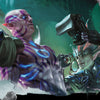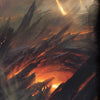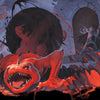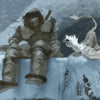Improving Critical Fumbles in D&D
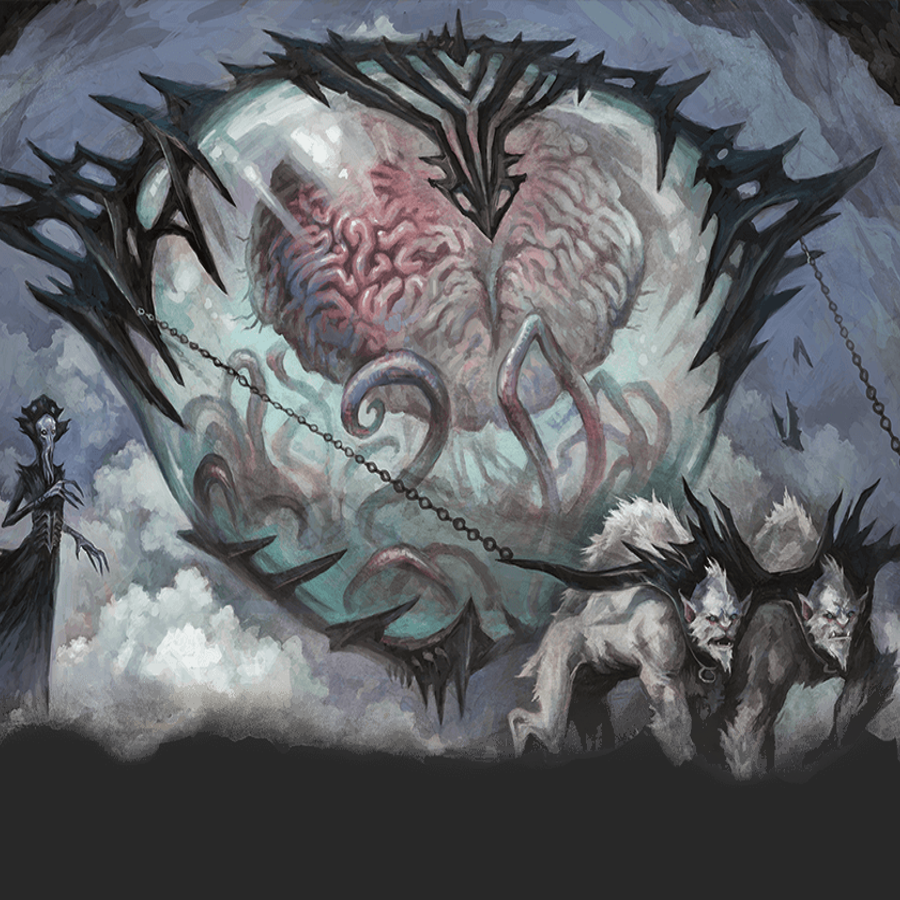
Written by Luke Hart
Today we’re going to continue our little discussion about critical fumbles that I began in my Ten Worst House Rules Ever video.
You see, I claimed that critical fumbles are one of the worst house rules ever, which is why I mentioned them. However, I got crap tons of comments from people saying their groups love critical fumbles.
Now, what I’m going to do here is first delve a little deeper into the failing of critical fumbles, and then I’m going to discuss several ways I think dungeon masters can make critical fumbles more interesting and less heavy-handed in their games. In other words, we’re going to talk about how to do critical fumbles the right way.
By the way, running awesome 5e games with in-depth lore, deadly traps, and terrifying monsters doesn’t have to take hours of prep! Lairs & Legends 2 and Loot & Lore 2 have everything you need! Hand-crafted by a team of professional game masters to make it as easy to use as possible, it’s an anthology of game master resources to fuel you for years to come.
You can check out the video for this article below.
If your players are having tons of fun suffering the ill effects of heavy-handed critical fumble tables that result in things like losing legs, getting permanently blinded, and any other multitude of effects that basically doom them to worthless characters, then you shouldn’t be listening to me.
Your players are having fun getting maimed and all that jazz. Just keep doing your thing. You’re good. But there are LOTS of players who don’t particularly enjoy it. So it behooves a dungeon master to understand why.
Oh, and to be clear, let’s define what I’m talking about when I say critical fumbles suck. I’m talking about the horrible critical fumble tables that are kicking around out there. I have no problem with a natural 1 attack roll being an automatic miss. This is not even a house rule but a part of the core game rules. What I do not like personally is when that natural 1 becomes something much, much more horrible, such as what results when the DM rolls on a heavy-handed critical fumble table. And I’m going to tell you why.
First of all, the idea of critical fumbles is rather illogical considering other game mechanics. Let’s take a look at the career of a fighter. At first level, Jim Bob can attack one time in six seconds (which is how long a round lasts). So, there is a one 5% chance that he has a critical fumble and screws up bad.
As Jim Bob adventures and gets more experience and gets better as a fighter, he gets more attacks. He gets two, three, or even four attacks in the same six seconds (or one round). Which means he now has four 5% chances to have a critical fumble and screw up really bad. So you’re telling me that the better Jim Bob gets as a fighter, the more often he’s going to screw up royally in the same span of time? Something just seems a little off about that.
And now, if the dungeon master decides to roll on a table full of horrible results each time Jim Bob rolls a natural 1 on an attack roll, well, Jim Bob is getting doubly punished for improving as a fighter. At that point, Jim Bob is wondering why he even bothered leveling up. And he also might be getting a little jealous of Tiffany.
You see, Tiffany is a wizard. And when Tiffany casts spells, some of them require attack rolls which could result in critical fumbles, but many of them—perhaps even the majority of them—don’t. Instead, the enemies make saving throws with zero chance of critical fumbles, which trigger the dungeon master to roll on those heavy-handed tables.
So Jim Bob, the fighter, is left wondering why he is unfairly targeted with this game mechanic and why Tiffany, the wizard, doesn’t have to put up with it nearly as much. In fact, Jim Bob might propose to the dungeon master that when Tiffany casts a spell requiring a saving throw, something like this might apply: when a creature rolls a natural 20 on the saving throw, that’s the equivalent of a critical fumble for Tiffany.
So, when Tiffany casts fireball on that group of goblins, and three of them roll natural 20s, well, Tiffany gets to suffer the effects of three rolls on the critical fumble table. I mean, Jim Bob would probably argue that’s pretty fair, considering what he has to put up with.
In common language, the issue is this: critical fumbles don’t affect all classes equally. And unless the dungeon master creates house rules to correct that, it’s not fair for all players. Simply put, it gives some players the shaft while others get off scot-free. And that’s not cool.
However, that’s not all. You also really need multiple critical fumble tables that are customized for the different classes and make sense for them. Now, why’s that? Well, if the result on a table is that the PC drops their sword, that doesn’t really make much sense if the PC is a wizard, now, does it?
You know what? I bet these tables already exist. I bet there are people who use twenty different critical fumble tables depending on the class and, perhaps, in the case of spellcasters, the type of spell they cast. I gotta ask: At that point, is the additional complexity of using multiple critical fumble tables really worth it?
Every additional rule, table, and die roll slows the game down. And worse, it slows it down in the part that struggles most from slowness: combat. I mean, there are entire videos and blog posts and perhaps even books written about how to speed combat up, and here we are, stabbing ourselves in the feet with critical fumble charts. Why do we do this to ourselves, fellow dungeon masters?
Now, if I still haven’t managed to convince you that critical fumble tables might not be the best idea, then keep using them.
In truth, critical fumble tables might not be all that bad under certain circumstances. You still gotta fix the problems I’ve already mentioned, but I could see some situations where they could work well.
First, there are different types of D&D games: high fantasy, horror, mystery, and other types, and somewhere in that list is a gritty game style—a game that aims to be more realistic and uncompromising, where the characters might not be heroes so much as people striving against colossal odds to stay alive. I could see critical fumble tables being useful in games like this because they help reinforce that gritty game style.
If your critical fumble tables are not heavy-handed and the consequences in them are trivial and meant to purely introduce flavor and perhaps humor into the game, then that could be tons of fun.
I imagine just about now you’re either a bit confused or angry that I just did a 180 on you. Like, Luke, how can you spend several minutes pissing and moaning that critical fumbles and tables for them are bad and then turn around and say that they can be good? Well, you’re just going to have to accept that not everything in life is black and white, I guess. But let me emphasize once again that critical fumbles still have problems that you should address before using them, even if they might be good for a game.
Here are a few ideas for improving critical fumbles in the game. Now, these are not fully fleshed out; I don’t have play-tested systems for these. They are just ideas. Take them for what you will, and if something appeals to you, feel free to flesh it out and run with it at your game.
#1 Press Your Luck
You could allow your players to press the boundaries of what their characters are capable of and have a critical fumble associated with it if they fail. The important part, however, is that the consequence for a critical fumble should be equal to or less than the action they are attempting to take. In other words, it should make sense.
If a barbarian is attempting to create some slick new horseshoes, having her forge explode on a critical fumble is stupid. Instead, maybe she quenches the steel poorly and has to do them over again.
For example, a wizard wants to sculpt a fireball spell around his allies. The dungeon master asks him to make a DC 20 Arcana check to succeed and says that if he fails by 5 or more, it will be considered a critical fumble. The wizard ends up rolling a 13 on his Arcana check, they roll on a critical fumble chart, and there is a magical backlash. Not only do his companions take damage from the fireball, but the wizard suffers 2d6 psychic damage.
Or a fighter wants to cleave through an enemy, essentially being able to attack more than one foe with an attack. The DM says she needs to succeed on a DC 20 Athletics check, and if she fails by 5 or more, it’s a critical fumble. The fighter rolls a 12, and her sword gets stuck in the armor of the first enemy, requiring an action on her next turn to extract it. Or the fighter rolls a 22 and not only gets to attack the first enemy but also one additional enemy with the same attack.
I suggest being careful with these. While perhaps interesting conceptually, they could introduce quite a bit of imbalance into the game. For instance, a fighter being able to attack twice for the price of one might be a bit much.
#2 Critical Fumble Charts Are Only Used when the PC Has Disadvantage on the Attack
So, on a straight attack roll, if I roll a 1, it’s just a miss. However, if I have disadvantage on the roll and roll a 1 on one of the dice, then we also roll on a critical fumble chart.
This has the advantage of making rolls on crit fumble charts a rarer occurrence, but it still has them be part of the game. It also serves to reflect realism more. If a PC already has disadvantage on an attack, they are already in a poor situation. And it makes more sense then for a something really bad to happen if they roll a 1.
#3 Use Critical Fumble Charts Instead of Disadvantage
You could do something like this: when a player has disadvantage on something, they could instead roll a single d20, but if they fail by 5 or more, it’s considered a critical fumble. And then, you roll on a chart to see what happens.
I think the key here is giving your players the choice. Don’t force it on them. They get to choose every time they have disadvantage. Maybe sometimes they’d prefer to have disadvantage, but other times they’d rather risk a roll on the critical failure chart. Let it be a player’s choice, not a dungeon master edict.
#4 Confirm Critical Fumbles Before Rolling on a Chart
Now there is nothing super new about this idea. In previous editions you had to confirm critical hits. If you rolled a natural 20 on an attack, you had to make another attack roll to hit the enemy to see if the hit was really a critical hit. I’m not suggesting that exactly. Instead, if you roll a natural 1 on an attack, it’s always a miss. That part doesn’t change. However, you make a second attack roll, and if the result still misses the target’s armor class (but it does NOT have to be a second natural 1), then you roll on a critical fumble chart. So, rolls on these charts are still part of the game, but they happen less often.
Lairs & Legends 2 - The Definitive 5e Resource Anthology for GMs
Lairs & Legends 2 is not only two hefty books packed full of adventures, monsters, traps, and puzzles. It’s a resource anthology designed to help you run and play amazing games!
Contained in these books, you’ll find:
- 30 Adventures
- Over 100 Monsters
- 30 Traps
- 30 Puzzles
- 30 Stand-Alone Encounters
- 20 New Magic Items
- 6 Custom Rule Sets
- 20 Monster Templates
- 3 Sets of Random Tables
Running awesome 5e games with in-depth lore, deadly traps, and terrifying monsters doesn’t have to take hours of prep! Lairs & Legends 2 and Loot & Lore 2 have everything you need!
Hand-crafted by a team of professional game masters to make it as easy to use as possible, this anthology of game master resources will fuel your games for years to come!
-
Posted in
Game Master How-To Articles


